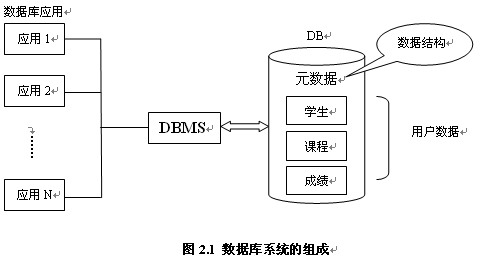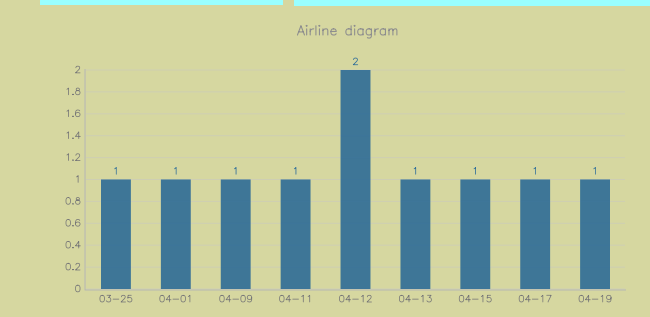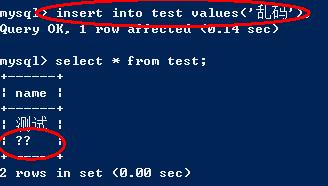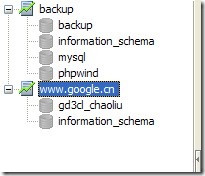答案:经过几天的测试,终于可以发布了!
1. 在MySQL源代码目录下新建脚本 install.sh,把下面的代码添加到这个脚本中:
#!/bin/bash####################################################### Title: MySQL 4.1 Cluster Installation Script #### Version: 1.0 #### Date: 2004-11-11 #### Author: yipsilon #### Email: yipsilon@163.com #### License: General Public License (GPL) #### Copyright(c) 2004, yipsilon All Rights Reserved ######################################################### ChangeLog ######################################################### Installation Guide #### 1. Copy the script file into mysql source path #### 2. Change script file's permission to 755 #### 3. execute it and wait for... ############################################################################################################ MySQL Server Config ###########################################################Determine to install MySQL server#"0" means do not install server programsINST_SERVER=1#MySQL installation pathINST_PATH="/usr/local/mysql"#Define the ports of MySQL installation, intput strings of PORT with whitespace separated.#e.g. "3306 3307" means install two MySQL servers:# The first server will be installed to $INST_PATH/1 and listen 3306 port.# The second server will be installed to $INST_PATH/2 and listen 3307 port.# ... ...INST_PORTS="3306"#The management server informationMGM_HOST="192.168.1.253"MGM_PORT="2200"#################################################### MySQL Cluster Config ########################################################Determine to install cluster#"0" means do not install cluster programsINST_CLUSTER=1#Define COMPUTERs in config.ini, intput strings of HostName with whitespace separated.#The Id attribute is auto increment and start with 1.#e.g. "192.168.1.253 192.168.252" will generate the following code# [COMPUTER]# Id=1# HostName=192.168.1.253# [COMPUTER]# Id=2# HostName=192.168.1.252COMPUTERS="192.168.1.253 192.168.1.252"#Define MGMs in config.ini, intput strings of HostName with whitespace separated.#e.g. "192.168.1.253 192.168.252" will generate the following code# [MGM]# HostName=192.168.1.253# [MGM]# HostName=192.168.1.252MGMS="192.168.1.253"#Define DBs in config.ini, intput ids of ExecuteOnComputer with whitespace separated.#e.g. "1 2" will generate the following code# [DB]# ExecuteOnComputer=1# [DB]# ExecuteOnComputer=2DBS="1"#Define APIs in config.ini, intput ids of ExecuteOnComputer with whitespace separated.#e.g. "1 0 1 2" will generate the following code# [API]# ExecuteOnComputer=1# [API]# [API]# ExecuteOnComputer=1# [API]# ExecuteOnComputer=2APIS="1 0 2 2"################################################################################ Starting to install programs, do not modify them! ###############################################################################echo "Starting to install programs" > install.log#Find installation pathif [ $# -gt 0 ] then INST_PATH="$1"else INST_PATH="/usr/local/mysql"fiif [ 0 -lt $INST_SERVER ]then echo "Now, installing the MySQL servers..." #Loop to install mysql servers INSTALLED_SERVER_COUNT=1 for PORT in $INST_PORTS do #Define the current mysql server installation path MYSL_PATH=$INST_PATH/$INSTALLED_SERVER_COUNT #Configure mysql server echo "Exec ./configure --prefix=$MYSL_PATH --with-pthread --with-unix-socket-path=$MYSL_PATH/var/mysql.sock --with-mysqld-user=root --with-tcp-port=$PORT --with-charset=gbk --with-ndbcluster" >> install.log ./configure --prefix=$MYSL_PATH --with-pthread --with-unix-socket-path=$MYSL_PATH/var/mysql.sock --with-mysqld-user=root --with-tcp-port=$PORT --with-charset=gbk --with-ndbcluster #Make mysql server echo "Exec make && make install" >> install.log make && make install #Create var directory for mysql data mkdir -p $MYSL_PATH/var #Create my.cnf echo "Create $MYSL_PATH/var/my.cnf" >> install.log echo "[client]" > $MYSL_PATH/var/my.cnf echo "port=$PORT" >> $MYSL_PATH/var/my.cnf echo "socket=$MYSL_PATH/var/mysql.sock" >> $MYSL_PATH/var/my.cnf echo "" >> $MYSL_PATH/var/my.cnf echo "[mysqld]" >> $MYSL_PATH/var/my.cnf echo "ndbcluster" >> $MYSL_PATH/var/my.cnf echo "ndb_connectstring=host=$MGM_HOST:$MGM_PORT" >> $MYSL_PATH/var/my.cnf echo "user=root" >> $MYSL_PATH/var/my.cnf echo "port=$PORT" >> $MYSL_PATH/var/my.cnf echo "basedir=$MYSL_PATH/" >> $MYSL_PATH/var/my.cnf echo "datadir=$MYSL_PATH/var/" >> $MYSL_PATH/var/my.cnf echo "socket=$MYSL_PATH/var/mysql.sock" >> $MYSL_PATH/var/my.cnf echo "default-character-set=gbk" >> $MYSL_PATH/var/my.cnf echo "default-storage-engine=INNODB" >> $MYSL_PATH/var/my.cnf echo "max_connections=500" >> $MYSL_PATH/var/my.cnf echo "" >> $MYSL_PATH/var/my.cnf echo "query_cache_size=33M" >> $MYSL_PATH/var/my.cnf echo "table_cache=1520" >> $MYSL_PATH/var/my.cnf echo "tmp_table_size=16M" >> $MYSL_PATH/var/my.cnf echo "thread_cache=38" >> $MYSL_PATH/var/my.cnf echo "" >> $MYSL_PATH/var/my.cnf echo "#MyISAM Specific options" >> $MYSL_PATH/var/my.cnf echo "#skip-myisam" >> $MYSL_PATH/var/my.cnf echo "" >> $MYSL_PATH/var/my.cnf echo "#INNODB Specific options" >> $MYSL_PATH/var/my.cnf echo "#skip-innodb" >> $MYSL_PATH/var/my.cnf chmod 755 $MYSL_PATH/var/my.cnf #Install mysql database echo "Exec $MYSL_PATH/bin/mysql_install_db" >> install.log $MYSL_PATH/bin/mysql_install_db #Create mysql control script if [ -e $MYSL_PATH/share/mysql/mysql.server ] then #Use default mysql control script #Create mysql server start script echo "Create $MYSL_PATH/start" >> install.log echo "$MYSL_PATH/share/mysql/mysql.server start" > $MYSL_PATH/start echo "Chmod 755 $MYSL_PATH/start" >> install.log chmod 755 $MYSL_PATH/start #Create mysql server stop script echo "Create $MYSL_PATH/stop" >> install.log echo "$MYSL_PATH/share/mysql/mysql.server stop" > $MYSL_PATH/stop echo "Chmod 755 $MYSL_PATH/stop" >> install.log chmod 755 $MYSL_PATH/stop #Create mysql server restart script echo "Create $MYSL_PATH/restart" >> install.log echo "$MYSL_PATH/share/mysql/mysql.server restart" > $MYSL_PATH/restart echo "Chmod 755 $MYSL_PATH/restart" >> install.log chmod 755 $MYSL_PATH/restart else #Use custom mysql control script #Create mysql server start script echo "Create $MYSL_PATH/start" >> install.log echo "$MYSL_PATH/libexec/mysqld &" > $MYSL_PATH/start echo "Chmod 755 $MYSL_PATH/start" >> install.log chmod 755 $MYSL_PATH/start #Create mysql server stop script echo "Create $MYSL_PATH/stop" >> install.log echo "$MYSL_PATH/bin/mysqladmin -u root -p shutdown" > $MYSL_PATH/stop echo "Chmod 755 $MYSL_PATH/stop" >> install.log chmod 755 $MYSL_PATH/stop #Create mysql server restart script echo "Create $MYSL_PATH/restart" >> install.log echo "$MYSL_PATH/bin/mysqladmin -u root -p shutdown" > $MYSL_PATH/restart echo "$MYSL_PATH/libexec/mysqld &" >> $MYSL_PATH/restart echo "Chmod 755 $MYSL_PATH/restart" >> install.log chmod 755 $MYSL_PATH/restart fi #Clean mysql server to get ready for the next installation echo "Exec make clean" >> install.log make clean INSTALLED_SERVER_COUNT=$(($INSTALLED_SERVER_COUNT + 1)) done echo "Configurations! MySQL servers has been installed successfully." echo "" echo "1. To start mysql server, use the following command:" echo " cd <MYSQL_INSTALLATION_PATH>" echo " ./start" echo "" echo "2. To stop mysql server, use the following command:" echo " cd <MYSQL_INSTALLATION_PATH>" echo " ./stop" echo "" echo "3. To restart mysql server, use the following command:" echo " cd <MYSQL_INSTALLATION_PATH>" echo " ./restart"fi#Install cluster programsif [ 0 -lt $INST_CLUSTER ]then if [ -e $INST_PATH/1 ] then echo "Now, installing the cluster programs..." #Define the cluster installation path CLST_PATH=$INST_PATH/cluster #Create cluster directory echo "Exec mkdir
上一个:我的第一次数据库作业:题目原文
下一个:MySQL的历史
- 更多MySQL疑问解答:
- 如何将SQL 2005中的数据实时同步到MYSQL中
- java对mysql数据库备份后,它的备份记录怎么显示查出来啊。 求告诉、
- 如何查询mysql表中的相似度。
- mysql 查看表有没有被锁
- mysql front 和mysql
- mysql 建表 问题 求解答 为什么不能创建表
- mysql查询问题
- mysql中怎么让union all不打乱顺序
- mysql中修改表字段
- mysql用户操作表权限的问题(java)
- mysql 如何在查询时防止插入
- mysql中的 insert into select 问题,想在同个服务器下复制不同数据库的表的内容,在线求方法,谢谢
- mysql中的concat用法!
- 使用mysql中,我想把表product的数据备份到同个服务器创建一个新表出来,刚学习mysql,用SELECT INTO 出错
- mysql delete语句删除指定列的指定关键字的所以数据





